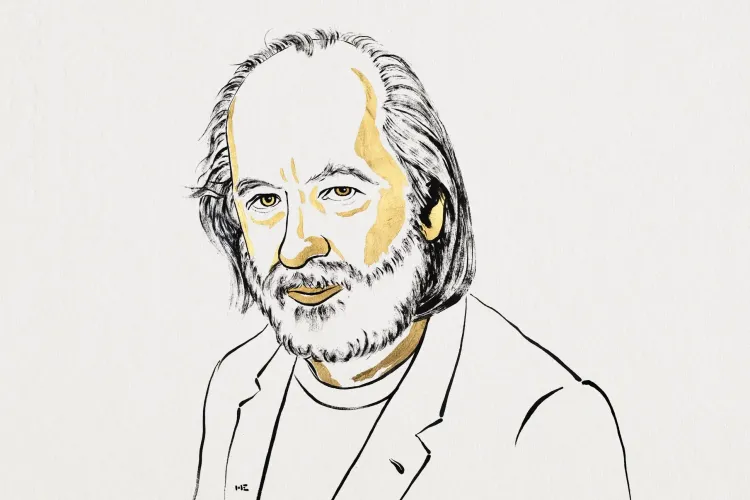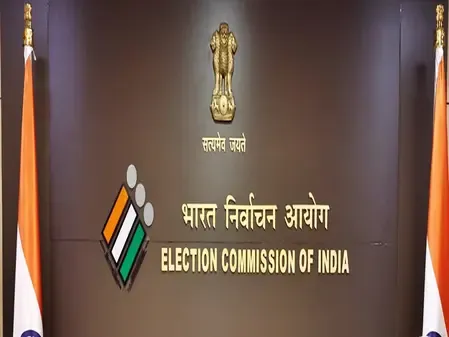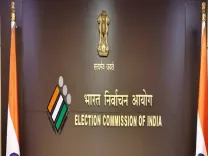Is Hungary's Krasznahorkai, with His Thought-Provoking Works Bridging East and West, the Next Nobel Laureate in Literature?

Synopsis
Key Takeaways
- Laszlo Krasznahorkai has been awarded the 2025 Nobel Prize for Literature.
- His works bridge Eastern and Western literary traditions.
- He is known for his complex and challenging narratives.
- Krasznahorkai's writing often reflects contemporary societal issues.
- He is the second Hungarian to win a Nobel Prize in Literature.
New Delhi, Oct 9 (NationPress) In a bid to elevate remarkable writers to a wider stage, the 2025 Nobel Prize for Literature has been awarded to Hungarian author Laszlo Krasznahorkai, whose intricate, yet contemplative post-modern and near-surrealist narratives draw inspiration from literary giants such as Nikolai Gogol, Franz Kafka, and Samuel Beckett. His body of work transcends the traditional confines of Central Europe, delving into the realms of the mystical East.
In announcing the accolade, the Swedish Academy remarked that Krasznahorkai was selected "for his compelling and visionary oeuvre that, amidst apocalyptic dread, reaffirms the transformative power of art".
Krasznahorkai, now 71, is the second Hungarian recipient of this prestigious literary honor, following Imre Kertesz in 2002, and was also the first from his country to secure the Man Booker International Prize in 2015.
Let's take a closer look at some of his literary contributions, particularly his novels.
The author, whose repertoire spans novels, novellas, short stories, and screenplays, is known for his challenging narratives, describing his own creations as "reality scrutinized to the brink of insanity".
His distinctive style features lengthy sentences, unbroken paragraphs, and abrupt shifts in perspective, with time flowing fluidly and the pacing of the narrative reflecting the tempo of societal evolution, according to one critic.
Krasznahorkai's debut, "Satantango" (1985, English translation "Satan's Tango", 2012), is characterized by a postmodern structure akin to a tango dance, with alternating steps forward and backward. Chapter titles such as "We Are Resurrected" and "The Distance, As Seen" highlight its multi-perspective nature.
Similar to Gogol's "The Government Inspector", the narrative unfolds in a nameless, decaying Hungarian village, where a con artist poses as a savior, exploits the residents, and leads them astray.
This tale was adapted into a seven-hour film by renowned Hungarian director Bela Tarr in 1994!
Krasznahorkai's subsequent work, "Az ellenallas melankoliaja" (1989, English translation "The Melancholy of Resistance", 2000), serves as a political allegory reflecting the tumultuous socio-political landscape of then Communist-ruled Central and Eastern Europe. Set in another unnamed town, it introduces a mysterious circus exhibiting a dead whale and a housewife who rises to confront chaos.
The interpretations of these themes, particularly in today's context, are left for readers to ponder.
His exploration of themes continued with "Haboru es haboru" (1999, English translation "War and War", 2006), which follows a Hungarian man's obsession with a mysterious manuscript leading him to New York City, and further with "Rombolas es banat az Eg alatt" (2004).
Released in English as "Destruction and Sorrow Beneath the Heavens" (2016), this work recounts a Hungarian man's journey to China to discover the nuances of traditional Chinese culture.
Krasznahorkai's next piece, "Seiobo jart odalent" (2008, English translation "Seiobo There Below", 2013), traverses time and geography, from Japan to ancient Persia and Renaissance Italy, chronicling the lives of both real and fictional artists. Notably, its 17 chapters are organized according to the Fibonacci sequence, starting at 1 and culminating at 2,584.
His more recent offering, "Baro Wenckheim hazater" (2016, English translation "Baron Wenckheim's Homecoming", 2019), returns to his homeland, presenting a complex narrative involving an elderly aristocrat's return, societal expectations, and local intrigue—considered by Krasznahorkai to be his finest work.
In an interview, he expressed that he has "always aimed to write just one book", stating, "I was dissatisfied with the first, hence I wrote the second. And so forth. With 'Baron', I can finally conclude this narrative, proving that I have penned just a single book in my lifetime," he shared with The Paris Review.
Nonetheless, Krasznahorkai has authored at least two additional novels, both of which await English translation, in addition to two novellas and various non-fiction pieces.
(Vikas Datta can be reached at vikas.d@ians.in)









